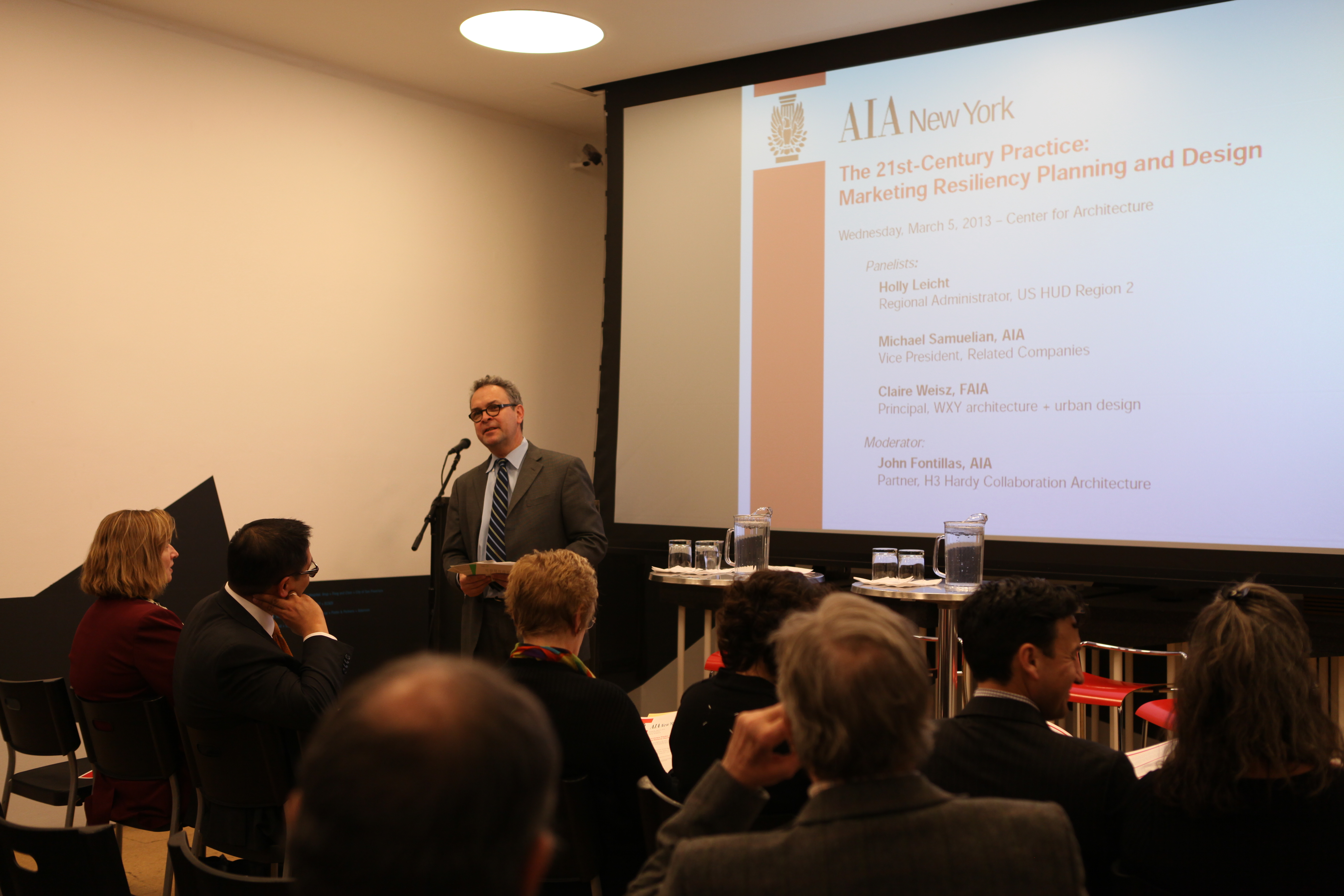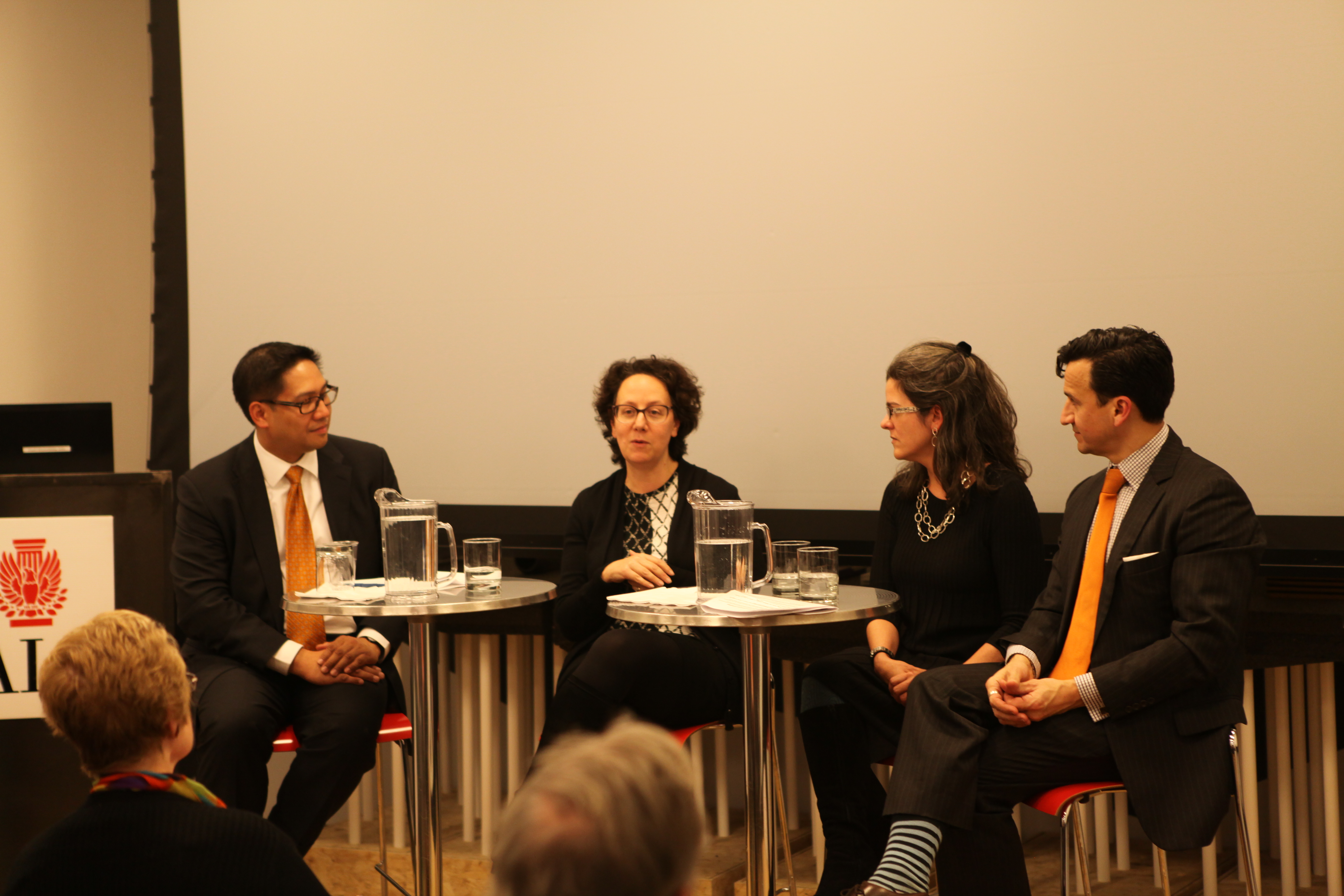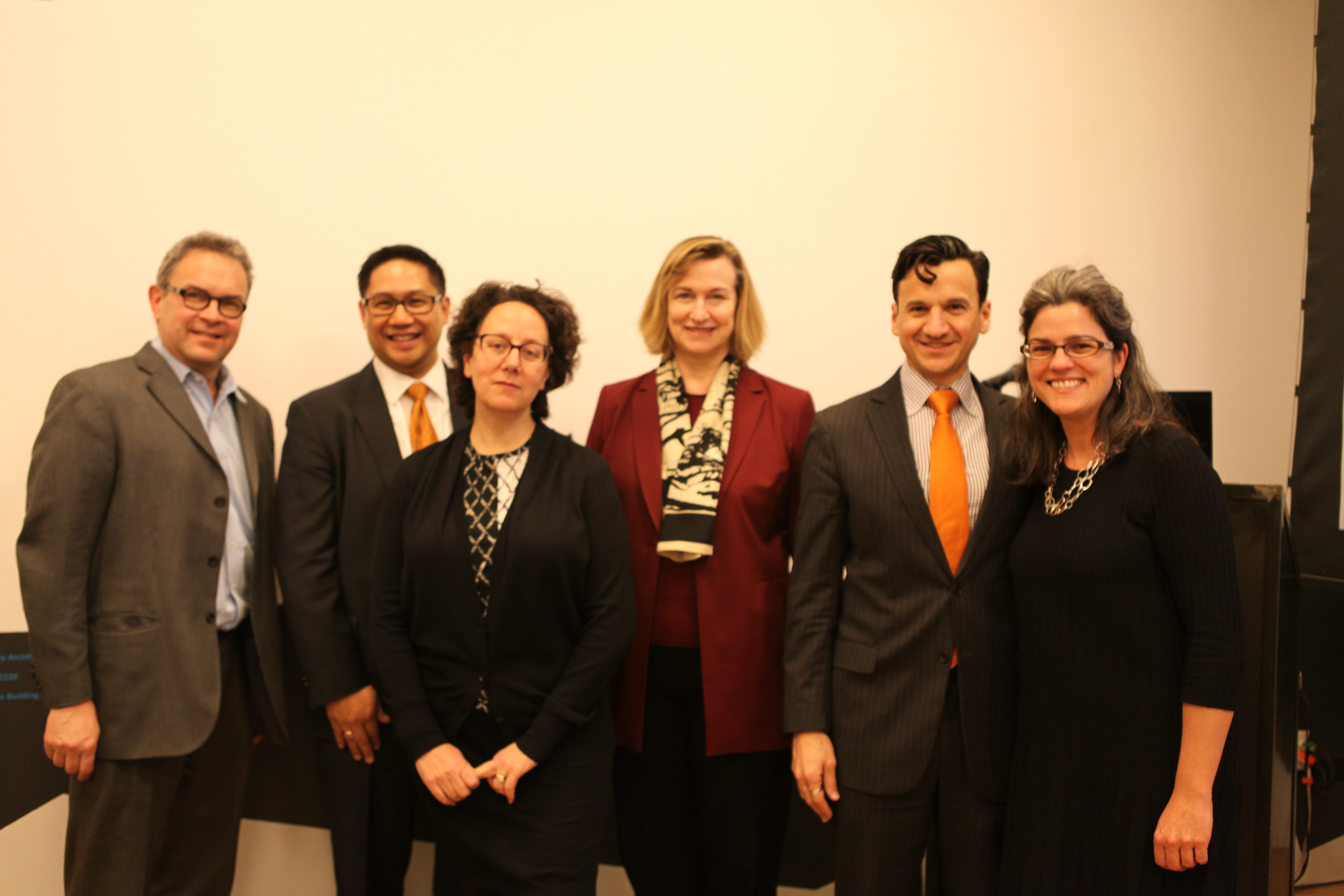by Graham Higgins LEED AP
On 10.21.14, an interdisciplinary panel representing both the public and private sectors within the design community met to discuss the significance of resiliency in contemporary planning and design. Co-sponsored by the AIANY Design for Risk and Reconstruction (DfRR) and the AIANY Marketing and Communications Committees, “The 21st-Century Practice: Marketing Resiliency Planning and Design” ambitiously attempted to define an ethos which has quickly become one of New York’s central design and planning considerations. The panelists approached the concept of resiliency from a distinctly multidisciplinary focus. Focusing particularly on a New York point perspective, moderator John Fontillas, AIA, LEED AP, a partner at H3 Hardy Collaboration Architecture, sought to explore the concept of resiliency in the context of “the art of the possible.”
In the wake of Hurricane Sandy, designing for resiliency has become an increasing concern throughout New York. It has become abundantly clear that the city will face a variety of extreme weather events intensified by climate change. As a result, design that addresses phenomena such as sea-level rise and hurricane-force winds has emerged to address the conditions that New York will face. As panelist Michael Samuelian, AIA, vice president at Related Companies, revealed, common New York City-based resiliency measures include elevating structures and key mechanical systems above flood plains and areas of impact, as well as incorporating onsite energy production that will function regardless of the overall grid’s condition. Such measures allow individual buildings to adapt to drastically changing weather conditions, mitigating impact and facilitating speedy recovery. The adaptive and responsive nature of resilient design is set to evolve to confront future climactic conditions.
Through the Bloomberg Administration’s leadership, initiatives such as the 2013 Special Initiative for Rebuilding and Resiliency (SIRR) have helped foster a New York in which resilient design is extensively supported. Various competitions, grants, and funding schemes, such as RISE:NYC (http://rise-nyc.com/), have been built upon this framework, sparking further resiliency research and recommendations. The de Blasio Administration is well positioned to further cultivate public- and private-sector interest. New York has unquestionably become a world leader in resilient design, and, as the event’s panelists and moderator argued, will undoubtedly play a significant role in shaping this emerging field.
While the evening’s discussion addressed an impressive range of resiliency considerations, three topics in particular emerged as the central tenets of contemporary resilient design: designing with nature, multidisciplinarity, and replicability across a variety of scales.
As the panel argued, a fundamental consideration of resiliency is designing with water. The city’s historical influence can be directly attributed to its coastal geography; however, since the days of New Amsterdam, the city and the world’s climate has drastically changed. As a coastal city, New York will feel the full effects of sea-level rise and increased storm intensity attributable to climate change. In its present form, the same water which granted New York its historical significance poses a distinct threat to the modern metropolis. While the water level will continue to steadily rise, sporadic events such as Superstorm Sandy will also become increasingly commonplace. All the while, planning for the realities of these events, and the threats they pose to urban life and city systems, will become a prerogative for the city’s design professionals. Ultimately, one of resiliency’s fundamental principles is designing with nature. Developing an understanding of the changing climactic conditions which affect an area will help define the strategies an individual, buildings, or city can employ before and after a natural catastrophe. Resilient design requires an understanding of a site’s natural environment to produce ecologically-informed structures capable of responding to any future challenge.
For Claire Weisz, FAIA, principal of WXY architecture + urban design, a diverse set of skills and considerations is crucial to effective resilient design. Weisz was particularly critical of the American “silo-ed” approach to planning and design, which encourages professionals to specialize at the cost of a more general understanding of the collective elements that define a building or system’s success. As Weisz discussed, the American perspective often categorizes a design professional as either an architect or a landscape architect. A European perspective tends to foster and encourage effective understanding of both realms. Within the design world, multidisciplinarity highlights the inherent opportunities found in combining complementary perspectives to achieve a common goal. A truly resilient New York is one that is able to respond to any disaster, natural or anthropogenic, in a focused and effective manner. As such, fostering coordination amongst the design professionals responsible for encouraging this adaptability is crucial to any city’s future success. A multidisciplinary design professional is one who is capable of leading this coordination and encouraging needlessly isolated professionals to rally around a single goal.
From a governmental perspective, Holly Leicht, regional administrator for the U.S. Department of Housing and Urban Development Region 2, stressed the importance of creating resilient design that is replicable across a variety of scales. As the former director of New Yorkers for Parks, Leicht focused on the importance of the tangibility and inclusivity of resilient design. Many of New York’s early sustainability-inspired projects were simply too complex and expensive for implementation on a city-wide or regional scale. However, over time, “green” and high-performance strategies have emerged as best practices. Ultimately, costs for new construction and retrofit projects alike have dropped to levels comparable to conventional construction. Like the early iterations of sustainable design, resilient design in New York is in its formative stage. Resiliency itself is an often abstracted ideal, and the concepts of adaptation and disaster response challenge many of the contemporary design world’s accepted practices and paradigms. As such, it is crucial that resilient designs demonstrate their value in a concrete and scalable manner. The ability of a project to absorb and respond to a catastrophe presents a distinct benefit across social, environmental, and economic scales. It is crucial that pilot projects that focus on resilient design, such as Hunter’s Point South, continue to be developed and demonstrate the tangible value of resilient design. Such projects have the potential to preserve and strengthen threatened communities, prevent significant fiscal damage, and support healthy ecosystem function. As New York City continues to foster resilient design, the success of its initial projects will set the stage for resiliency’s growth across local, regional, national, and international scales.
Graham is the Director of Project Resiliency for the New York City-based Development Management firm Cirgenski + Capalino and covers a variety of sustainability and resiliency issues concerning the built environment.
Event: The 21st-Century Practice: Marketing Resiliency Planning and Design
Location: Center for Architecture, 03.05.14
Speakers: Holly Leicht, Regional Administrator, U.S. HUD Region 2; Michael Samuelian, AIA, Vice President, Related Companies; Claire Weisz, FAIA, Principal, WXY architecture + urban design; and John Fontillas, AIA, LEED AP, Partner, H3 Hardy Collaboration Architecture
Organizers: AIANY Marketing and Communications Committee and AIANY Design for Risk and Reconstruction Committee (DfRR)


